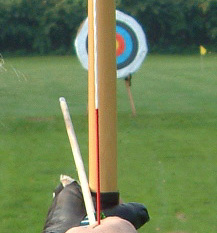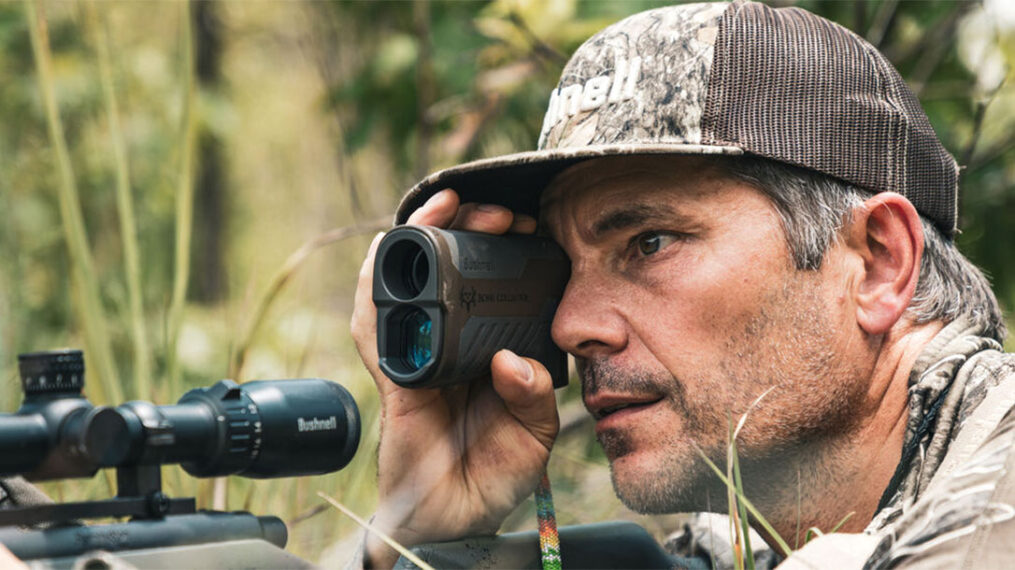Archery is a sport that combines skill, precision, and an understanding of complex dynamics. One of the most intriguing phenomenas to beginners in archery is the Archer’s Paradox. Understanding the paradox is crucial for archers who seek to fine-tune their bows for optimal performance. Let’s explore what the Archer’s Paradox is, why it occurs, and its significance in bow tuning.
What is Archer’s Paradox?

Archer’s Paradox refers to the phenomenon where an arrow resting on a bow, when viewed from behind, is pointed away from the intended target yet when shot flexes around the riser and hits in the target. Oft times the paradox is confused with the actual path and flexing of the arrow but then we’d be talking about Eigen modes and that makes my head hurt too much. The explanation for the paradox is what we’ll touch on and we’ll explain why we need that flex, too.
The Mechanics Behind Archer’s Paradox
When an archer releases the string, the energy stored in the bow is transferred to the arrow. Since the arrow can bend, some initial energy is taken up by the arrow and stored in that bend. This bending force causes the arrow to oscillate back and forth on its axis as it leaves the bow allowing the arrow to clear the bow riser. As it continues its flight further down range the arrow straightens and stabilizes.
It’s much easier to see this in action and there are some high quality videos that show it in slow motion. The following video shows exactly the kind of path you want your arrow to take. The first bend allows the arrow to clear the riser and the second bend back clears the fletchings of the riser:
Just as a point of reference this youtuber added another video of bad arrow spine matching causing fletching contact:
Here is one from the front
Cutaway Risers
One thing you may notice is in the risers in the previous videos have a shelf or an “arrow window” cut out of them. With a cutaway riser the paradox doesn’t exist. Remember that the paradox is when the arrow is pointed away from the target at rest when pointing the bow squarely at the target. Pointing a cutaway riser towards the target would have the arrow pointed at the target as well so there is no paradox.
Don’t confuse the flexing and dynamic spine of an arrow with the archers paradox. These two concepts are often incorrectly conjoined into one. I wanted to show you the videos to explain how an arrow could clear a riser even without a cutaway riser. The answer to the paradox is an arrow’s dynamic spine and how it flexes around the riser.
What Factors Effect an Arrow’s Clearance of the Riser:
- Arrow Spine: The stiffness of the arrow shaft, known as the spine, plays a crucial role in how much the arrow flexes. A stiffer spine results in less flexing, while a softer spine causes more pronounced bending.
- Bow Draw Weight: The amount of force required to draw the bowstring back affects the energy transferred to the arrow, thereby how much it flexes.
- Arrow Length: Longer arrows have more flex. The shorter you cut your arrows down, the stiffer the spine will be.
- Point Weight: The weight of the arrowhead influences the arrow’s flexing behavior. Heavier points increase the flex, while lighter points reduce it.
- Brace Height: The longer the string is pushing on the arrow the more energy is imparted into the arrow, thereby weakening its spine.
Understanding and visualizing the Archer’s Paradox can help when tuning your arrow. With this knowledge, tuning your bow becomes an informed process rather than a guessing game. If you can visualize what the arrow needs to do and what it is currently doing, making adjustments becomes a much easier task.






